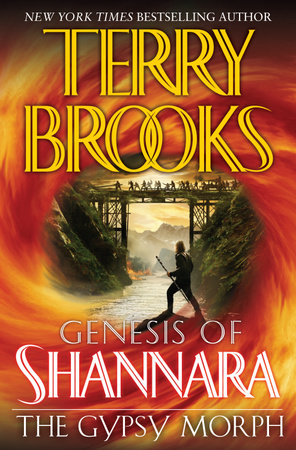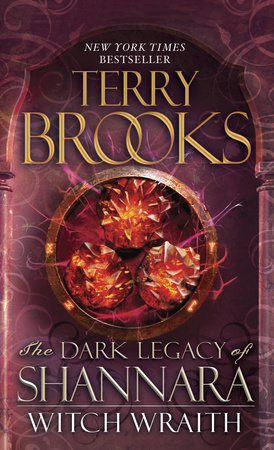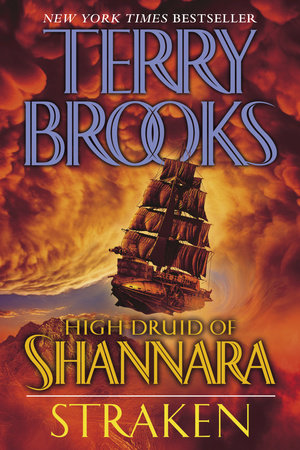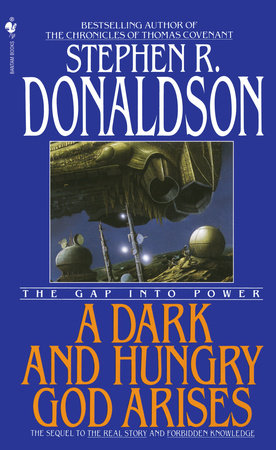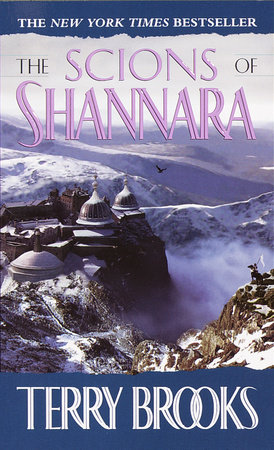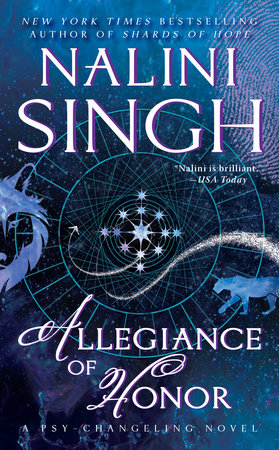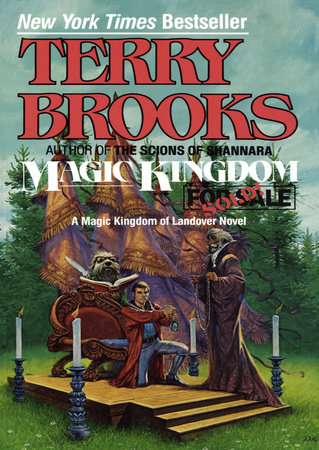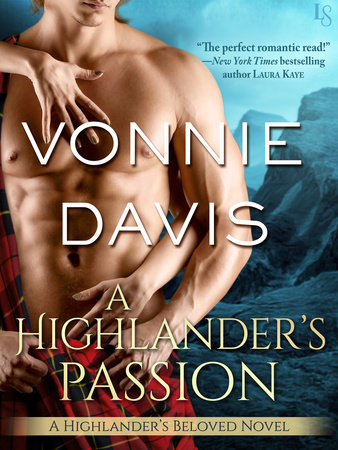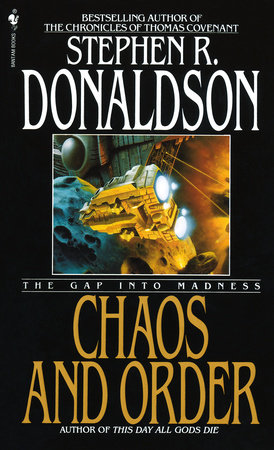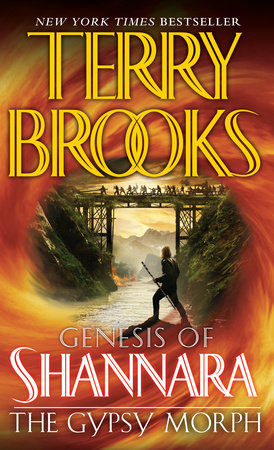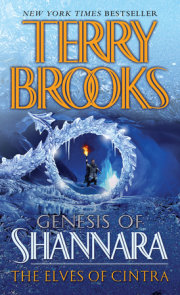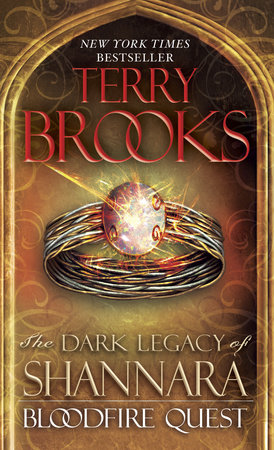Author Q&A
A Conversation with Terry Brooks
Del Rey:Your new novel, The Gypsy Morph, brings the Genesis of Shannara trilogy to a close. Do you feel any kind of letdown in finishing a major story cycle like this and saying good-bye to characters you’ve spent years living with and thinking about? Do you need some time to let your creative energies recover or do you begin another project right away?
Terry Brooks:First of all, the Genesis of Shannara does not conclude with publication of The Gypsy Morph. That trilogy is merely the first step in a series that is intended to run eight or nine books before it is finished. But, sure, I feel something of a letdown when I finish any book, which is why I go right into the next one. In this case, I have nearly finished it and will turn it in to the publisher later this month.
DR:I don’t want to reveal any spoilers, but even though The Gypsy Morph closes one chapter in the history of Shannara, there’s still a lot to explore in future novels. Are you going to continue to fill the gaps of your fictional history, for instance the events leading up to the First Council of Druids and the origin of the Ohmsford family?
TB:I am. As stated immediately above, I think I will go a total of eight or nine books altogether, and I will take the story all the way up to the First Council of Druids. It might take awhile, but I will get there eventually.
DR:There’s also room in the other direction of the time-line, looking back thousands of years to the events that sent the elves into hiding. Have you considered expanding the saga in that direction?
TB:I get asked about this regularly, but it isn’t something I am actively working on. It takes enough time thinking and writing about the Genesis of Shannara and the future of Shannara time periods. For now, those will have to do.
DR:A lot of writers see themselves as active creators and readers as passive recipients who fall under the spell of the storyteller and are swept along. Your view of storytelling seems more dynamic and interactive, a kind of collaboration with readers. How do you engage your readers on this level?
TB:My theory of storytelling is that you have to let the reader meet you halfway for them to become truly invested in the story. The trick is in not giving the readers too much of your vision and letting them make use of their own. So, for example, in describing the monsters I give just enough bare-bones descriptions to require that the readers flesh out the creature using their own vision. Same with dialogue. Don’t say everything; let the reader decide some of it. I also think a writer should never wrap up all the loose ends in a story. It is more fun is there is some uncertainty that requires readers to decide for themselves what happens after the last page is turned.
DR:There are many memorable characters in this trilogy, but my favorite is Logan Tom. As a Knight of the Word, he is endowed with incredible magic, but he also shoulders a crushing burden of responsibility. His motivations are selfish–the desire to avenge the deaths of his parents at the hands of the demon Findo Gask–yet at the same time he is capable of great altruism and self-sacrifice. He wrestles with all the doubts and desires of a man . . . while possessing knowledge and powers that set him apart from those he is sworn to protect. He reminds me a bit of the Druids that play such important roles in the later history of Shannara, but he seems more human for some reason.
TB:Is there a question in there somewhere, or am I allowed to ramble?
DR:Ramble on, please!
TB:There is certainly a suggestion of Druidic comparison in the depiction of the Knights of the Word. Interestingly enough, it is not my intention that the Knights serve as ancestors to the Druids. It is not a direct line of descent, as readers will discover in later books. There, as a result of your relentless probing, I’ve given away a major plot point! I hope you are satisfied.
DR:The central character in the trilogy is Hawk, the gypsy morph of this novel’s title. As a gypsy morph, Hawk is an embodiment of wild magic. What is wild magic, and how is it different from the magic of the Word and the magic wielded by the King of the Silver River?
TB:Oh, good–an easy question! Not. Okay, let me give this a shot. As I see it, wild magic is a confluence of various magics brought together through an act of nature. It is always unexpected and unplanned and happens only infrequently. When it does, something special is created. The magic is powerful and does not always immediately manifest itself in the form it will settle on. It is also not always clear if the magic will be good or evil. Mostly, it happens and takes its own course of action, and no one can influence it. But sometimes others will try to catch hold of it early and make use of it, which is what happened with the gypsy morph. Regular magic (sounds like an oxymoron to me) is more predictable and more limited in its usage and less powerful. Magic in general is never certain, but there are degrees of this.
DR:Also, does the magic of the Word and the Void flow from the same source, or are they two different things?
TB:They are flip sides of the same coin. Magic is indiscriminate and non-selective. Like science in our world, magic in the world of the Four Lands and in the stories of Genesis of Shannara have the same source and are good or bad depending on usage — or, more particularly, depending on the user’s intent. Remember that demons were once human until they became subverted by the magic and their hunger to possess and to consume it. Everything is very closely linked.
DR:Echoing the storyline of Hawk’s struggle to come to terms with his abilities and destiny is that of Kirisin, the young elf entrusted with the Elfstones and the safety of all Elvenkind. This seems to be one of your major concerns, a theme you return to again and again in your novels.
TB:I sometimes think that being a first-born, a father and a grandfather forces me to pay special attention to this issue. Seriously, we are all given certain responsibilities in life, some of which we don’t particularly want to have to deal with, some of which seem overwhelming. So we can all identify with the sorts of struggles that Hawk and Kirisin and my other protagonists face. It is an endlessly complex and compelling theme, this business of coming to terms with the demands of our lives, and I think readers look for answers in the stories we write.
DR:One thing all three of these characters come to share is an appreciation of the dangers of magic. Logan Tom even goes so far as to call magic a kind of drug, a tool that can corrupt its user. Yet it’s also the last, best hope of all that’s good against the evil of the Void. As you said a minute ago, it really is similar to science and technology, isn’t it?
TB:Exactly. In all instances, it is about usage of power. Power is a kind of drug, seductive and addictive. The difference is that power has multiple faces and can result in multiple outcomes. It takes all these different forms, but the one common denominator is its ability to change lives and in extreme cases entire worlds.
DR:There’s a kind of truism about fantasy, that it’s not really an escape from reality but rather a different way of engaging with it. Certainly in The Gypsy Morph and the other novels of this trilogy, the post-9/11 world is very much in evidence, with themes of terrorism and environmental catastrophe running through the narrative. In the face of these challenges, both humans and elves turn toward isolation; rather than confronting evil, they try to hide from it or ignore it, until it’s almost too late. Do you think that is a problem in today’s world?
TB:Well, duh. Not only of today’s world, but also of all the worlds gone past and all that will ever be. It is genetically ingrained in all of us and symptomatic of the human condition. A normal response to most problems that seem threatening is to try to avoid them. Heroes don’t just go charging off searching for monstrous threats to confront. Not in the real world, and that is always the world I am writing about. Real people only confront such threats when no other reasonable choice is left. I think that is just human nature.
DR:As a writer, do you see yourself as a "Knight of the Word"?
TB:No, I am not quite that egocentric or deluded, you can take your choice. I see myself as a storyteller, and that is quite enough responsibility for one lifetime, thank you very much. I write about how we would all like to be, but mostly are not.
DR:In our last interview, you mentioned that you were thinking about a new novel set in your Magic Kingdom world. Have you started that? Can you tell us anything about it?
TB:This is the book I mentioned in my answer to question one. I had decided several years ago that it was time to do a new Landover book. I haven’t published one since the mid-1990s and that segment of my readership is feeling badly used. So it took me until now, but I finally got it done and it will publish next year. I can tell you that the featured character is Mistaya Holiday, Ben and Willow’s daughter from the last book, who is now fifteen and attending boarding school in Ben’s world with rather limited success.
DR:You also mentioned that Warner had optioned the Shannara movie rights. Is there anything new on that front?
TB:Things are moving along. Mike Newell came aboard as director some time back. He has a great career already and has made many movies of all sorts, including Harry Potter and the Goblet of Fire most recently and is now involved in a big movie called Prince of Persia. When he finishes work of Prince of Persia, Elfstones of Shannara is his next project. We hope to hear who will be writing the screenplay shortly.
DR:Wow, that is exciting news!
